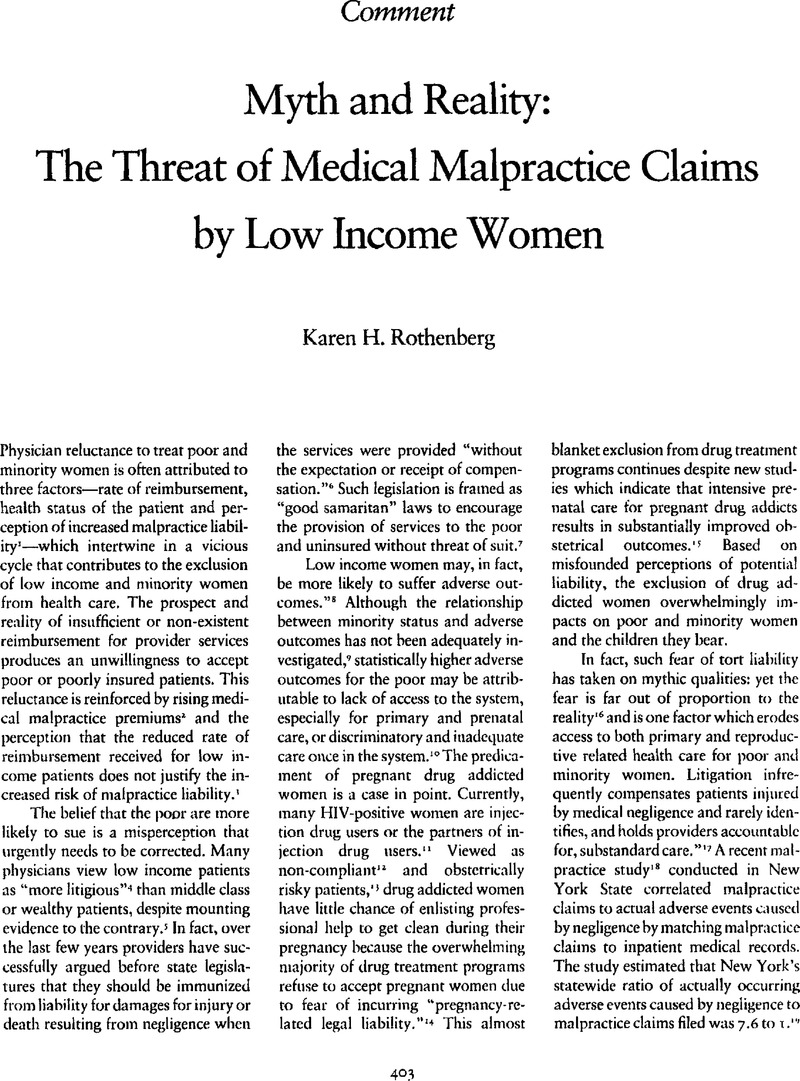Empirical evidence suggests providers can reduce actual malpractice claims by all socioeconomic groups by improving communications with patients.
Hickson, Gerald,
Clayton, Ellen Wright,
Githens, Penney, and
Sloan, Frank,
“Factors that Prompted Families to File Medical Malpractice Claims Following Perinatal Injuries,” 267 JAMA 1359–
1363 (March 11,
1992). A recent study, which surveyed 127 Floridian families who had filed claims for birth-related injuries, examined the reasons why families filed lawsuits. The reasons cited are illuminating: While 24% filed to obtain funds for long-term care, 20% filed when they realized the child had “no future”; 19% wanted to deter future incidents of malpractice or obtain revenge on the physician; 33% filed because someone, often another doctor, advised them to file, (or alternatively, the families interpreted subsequent treating physician comments as recognition of an injury or advice to sue); 24% filed because their physician was not honest about the circumstances of the injury; and 20% filed because it was the only way the families could determine what caused the injury. Families believed physicians failed to recognize fetal distress (53% of sample), manage fetal distress properly (57%), or perform a caesarean section (33%) or that physicians were unavailable when needed (29%).
Google Scholar